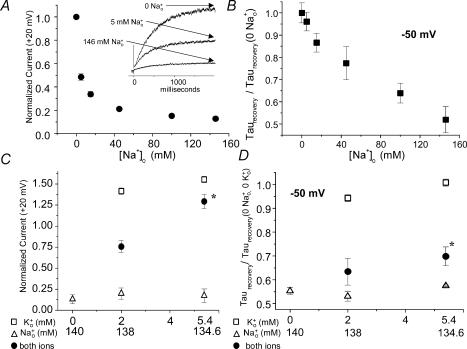Figure 2. Comparison of concentration–response and mole-fraction relationships for the two effects of Na+o.
A and B, Na+o concentration–response relationships measured in the absence of K+o. Note data in A and B were collected from the same cells. A, concentration–response relationship for effect of Na+o to inhibit HERG current at depolarized potential (2 s step to +20 from −80 mV, current at end of step (arrows, inset) normalized to value in 0 Na+o, n = 4–7); similar design to experiments in Numaguchi et al. (2000a). IC50= 4.1 ± 1.1 mm. B, concentration–response relationship for effect of Na+o to speed HERG recovery from inactivation at −50 mV (same data as shown in Fig. 1C, n = 4–5). Note that while 4.1 ± 1.1 mm[Na+]o caused a half-maximal inhibitory effect (A), much greater [Na+]o was necessary for a half-maximal effect in speeding recovery kinetics (B). Because it is unclear from the concentration–response data for speeding of recovery whether the effect has saturated at the highest [Na+]o tested, the calculated [Na+]o giving a half-maximal effect depended greatly on the equation used to fit the curve. We fitted the [Na+]o concentration–response relationships for recovery time constants using the modified Hill equation:
yielding an EC50 of 176 ± 15 mm and a Hill coefficient of 0.85 ± 0.07, and also to the same equation with an offset term y′:
yielding an EC50 of 55 ± 22 mm, Hill coefficient of 0.54 ± 0.19, and y′= 0.2. C and D, mole-fraction experiments comparing the two effects of Na+o. In each experiment, currents were recorded first in 0 [K+]o, 0 [Na+]o and all data from a given cell were normalized to this measurement. Note that the x-axes for Na+o and K+o have opposite polarity. Open symbols indicate single ion concentration–response data (triangles for Na+o, squares for K+o). The filled circles show the calculated result when Na+o and K+o were mixed in the proportions indicated on the abscissa. n = 4–5 for each point. Physiological [K+]o antagonized both effects of Na+o in a non-additive manner; K+o relieved the effect of Na+o on current magnitude (C) more effectively than it relieved the effect on τrecovery (D). For both measurements, the normalized value in 5.4 mm[K+]o, 134.6 mm[Na+]o was significantly greater than the value in 0 [K+]o, 134.6 mm[Na+]o (P < 0.05).

